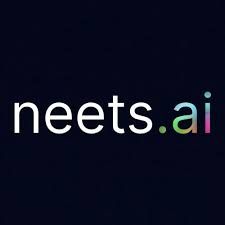
Sindarin
A platform for creating conversational AI agents with large language models for real-time, lifelike voice interactions.
Browse our elite collection of AI agents and build your digital workforce in minutes, not months.

A platform for creating conversational AI agents with large language models for real-time, lifelike voice interactions.

AI-driven video speed control and learning enhancement tool for individuals and teams.

Regal AI Phone Agent is a voice AI that manages tasks like scheduling and reminders, freeing live agents for complex calls.

Transform research papers into engaging podcasts featuring discussions between three personas.

World’s first human-realistic AI voice agents for inbound and outbound personalization and cloning.

AI-driven text-to-speech platform offering multi-language support, customizable voices, and seamless API integrations.

Synthflow AI is a no-code platform for creating AI voice assistants for calls and scheduling, requiring no technical skills.

AI-powered speech-to-text platform for enterprise-grade transcription and analysis

TalkStack AI automates support, sales, and operations with AI voice and text agents, ensuring efficiency, security, and scalability.
Voice AI agents work by using speech recognition to convert spoken language into text, then natural language processing (NLP) to understand the text and machine learning algorithms to generate appropriate responses or actions. They use vast datasets to improve their understanding and responses over time.
Some of the best AI voice tools include Google Assistant, Amazon Alexa, Apple Siri, Microsoft Cortana, Speechmatics, and Rev.ai. These tools offer capabilities like speech recognition, voice commands, real-time transcription, and voice-based automation.
AI voice tools are software applications that use artificial intelligence to understand and respond to voice commands. They enhance the user experience by offering hands-free control, personalized assistance, and real-time interaction, making technology more accessible and efficient.
Voice AI agents improve customer service by offering 24/7 support, automating common queries, providing quick responses, and personalizing interactions. They can handle high volumes of requests, reduce wait times, and ensure consistent service quality.
Yes, AI voice tools like Google Cloud Speech-to-Text and Otter.ai can be used for real-time transcription and captioning, converting spoken words into text instantly for meetings, lectures, podcasts, and other events, improving accessibility and content usability.
The benefits include increased efficiency, cost savings, time savings, and better resource allocation. Voice AI agents automate tasks like call handling, appointment scheduling, customer queries, and data entry, allowing employees to focus on higher-level work.
Open-source voice AI refers to freely available AI tools that businesses can use to build voice-powered applications and integrate them into their operations. Businesses can use platforms like Mozilla DeepSpeech and Kaldi to create custom voice assistants or automate voice-based tasks without the cost of proprietary solutions.
Key features include speech recognition accuracy, multi-language support, natural language processing (NLP) capabilities, integration with other systems, real-time processing, customizability, and security for sensitive information.
Yes, AI voice assistants like Google Assistant and Amazon Alexa support multiple languages and can translate voice commands in real-time, making them ideal for businesses and users who need to communicate across different languages.
AI enhances voice recognition accuracy by using machine learning algorithms to continuously learn from speech patterns, contextual understanding, and user-specific data. This enables better handling of different accents, noisy environments, and complex commands for more accurate voice recognition.